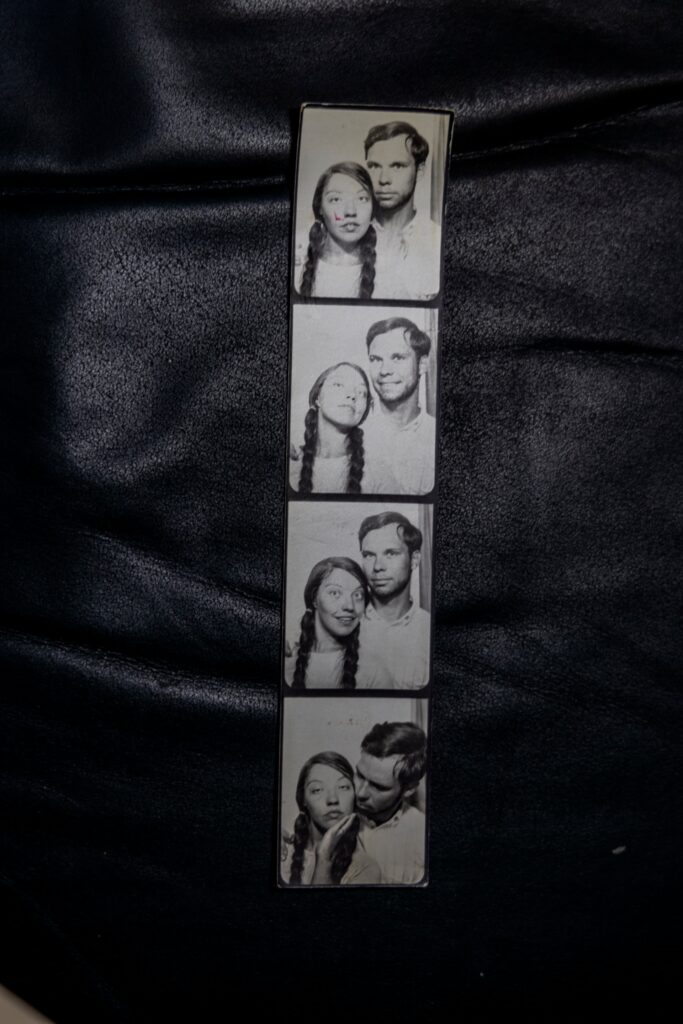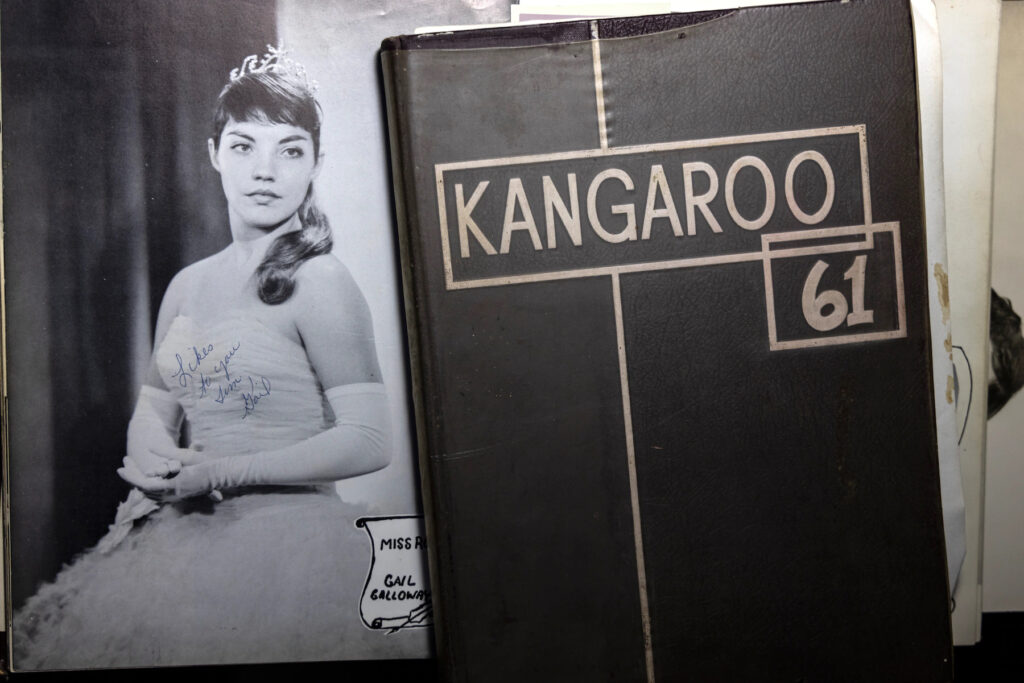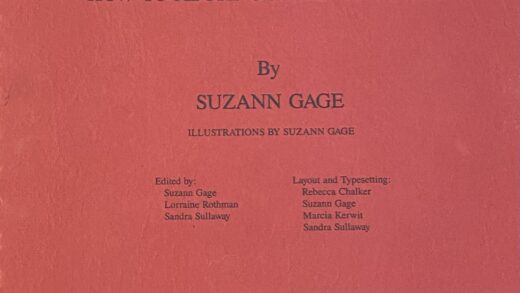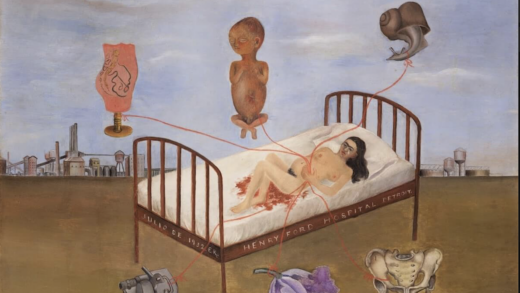Christina Hennessey
“Welcome, my name is Christina Hennessey and tonight we are taking a look at how reproductive justice’s past informs our new post-roe world.”
In this podcast, we will summarize the history of reproductive rights, and dive into the story of Gail Adams. We will also take a look at the broader implications of the movement through the lens of intersectionality, and what it means for the future.
Transcript
BEGINNING OF TRANSCRIPT
————————————————————————————————————————————————————
Christina: Welcome, my name is Christina Hennessey and tonight we are taking a look at how reproductive justice’s past informs our new post-roe world.
[Theme music plays and then fades to a quieter volume]
C: On June 24, 2022, in a case titled Dobbs v. Jackson Women’s Health Organization, the Supreme Court of the United States of America ruled on whether Mississippi banning abortions after 15 weeks was constitutional.
C: In a historical decision, the court not only upheld the constitutionality, but additionally overturned its previous rulings of Roe v. Wade and Planned Parenthood v. Casey which guaranteed a women’s constitutional right to have access to abortion related healthcare.
C: In response, some states immediately enacted laws that had been previously written to ban abortion should Roe be overturned.
C: Other states would shortly follow in similar fashion, passing laws restricting abortion rights to varying extents.
C: While others still would take the opportunity to strengthen own individual protections, the reality remains for millions of people that they no longer have control of their own bodies.
C: But how did we get here?
[Theme music stops]
[Silence]
C: Before and into the 19th century, abortion was legal until the point at which a mother could feel the motion of the fetus.
C: In 1857 the American Medical Association, which excluded black people and women from membership, campaigned to ban unregulated abortion mostly performed by midwifes in an attempt to establish their own legitimacy.
C: To do so, they created a new narrative that life began at the moment of conception.
C: As a result, at least forty laws were past placing restrictions on abortion rights.
C: Many physicians would still perform the procedure however for the rest of the 19th and early 20th centuries despite the near complete illegality across the nation.
C: In the depression era it even developed into the speciality of gynecology due to doctors understanding the hardships of rising a child at the time.
C: Entering the post World War II era, things shifted as these laws began being strictly enforced with the new American concept of a nuclear family with a stereotypical housewife idolizing the expectation for women to bear children.
C: This led to a period in the 50s and 60s where illegal abortions were rampant yet unregulated due to their illegality, leading to high rates of women being injured or killed from the process.
[Pause]
[Second song plays quietly]
C: In the summer of 1962 Gail Adams was in college and pregnant.
C: If her school found out she would be expelled.
C: So she decided on ending her pregnancy.
C: [In a different tone of voice] The following audio clips are a recreation of her interview with the Washington Post.
C: Getting a number from a classmate who had previously stolen money from her for her own abortion, Gail decided to find help.
Christina as Gail: There was this contact in San Antonio.
C as G: I spoke to a man.
C as G: I didn’t say I’m pregnant and I need an abortion.
C as G: I said someone gave me this number and said you would be able to help me.
C as G: They gave me a time and place, and how much money to bring.
Christina: After telling her parents, her dad decided to drive her despite the risk to his military career.
Christina as Gail: We pulled up to this area in San Antonio that was unknown to us.
C as G: I got out of the car.
C as G: I walked across this kind of plaza park.
Christina: Two men led Gail to what appeared to be an abandoned community center or school.
Christina as Gail: There were two women — one younger, one older.
C as G: There was one of those kind of tables that you rent for a reception or something, the folding table.
C as G: It was covered with newspapers.
C as G: I had to take off my panties.
C as G: I left on the rest of my clothes.
C as G: Then I got up on the table.
C as G: The older woman held my hand and was kind of like a doula.
C as G: They asked me to draw my knees up and then something was inserted into my vagina.
C as G: I didn’t see what it was.
C as G: It just felt like a long insertion of something that then pierced through. It hurt and it cramped.
C as G: I remember making a little noise and a woman squeezing my hand and kind of murmuring, and then it was withdrawn.
C as G: The next part did hurt.
C as G: That was the packing.
Christina: Referring to the totality of the procedure,
Christina as Gail: It was all done with great rapidity.
C as G: I would say less than an hour.
C as G: There was a great sense of urgency and fearfulness, really.
Christina: By the next day, it was clear that something had gone wrong.
C: Not only was Gail bleeding but she also had a fever.
C: Gail went to the hospital, and would end up there for 10 days.
C: On first learning about the abortion, the medical staff made every attempt to save the pregnancy.
C: Only after being seen by a second, older doctor, was she given the necessary procedure to save her life and stop the bleeding.
C: Gail Adams would go on to marry the man with whom the undesired pregnancy was conceived.
Christina as Gail: My parents and I never talked about it.
C as G: I didn’t tell my boyfriend until right before we were married.
[Pause]
[Music stops]
Christina: In 1965 the Supreme Court decision of Griswold v. Connecticut would set a new precedent by holding that the constitution guarantees a right to privacy, specifically in prescribing contraceptives.
C: Then in possibly two of the most historic decisions it would ever make, the Supreme Court ruled in 1973 in Roe v. Wade that abortion was a constitutional right and in 1992 in Planned Parenthood of Southeastern Pennsylvania v. Casey that women had the right to have an abortion up to fetal viability.
C: Despite this progress however, abortion was not universally supported, with many conservative and religious groups particularly taking an anti abortion stance.
C: Due to their pressure and influence four states passed laws from 2005-2007, referred to as “trigger laws”, that would immediately criminalize providing any abortion related healthcare if Roe. was ever to be overturned.
C: With opposition gaining traction due to the internet providing a medium for its spread, and due to a presidential administration with unprecedented radical conservatism having the opportunity to appoint two conservative supreme court justices, the stage was set, which leads us back to June of 2022.
C: At the time of writing this podcast, in December of 2022, 13 states have enacted laws banning abortions.
C: In other states, the fight is ongoing.
[Short pause]
C: But what happens next?
C: In in latter half of the seventies the Combahee River Collective argued that the white feminist movement and the Civil Rights Movement failed to address the needs of black queer women that resulted from the combination of the individual oppressions attributed to their various identities.
C: In 1994 twelve back women working within and outside the pro-choice movement coined the term “reproductive justice” to recognize the commonality of their experiences and set the stage for the inevitable end to future oppression through raising social consciousness.
C: What these black feminists had created in the tradition of the Combahee River Collective was an original intersectional theory and praxis called reproductive justice.
C: As described by Loretta Ross paraphrasing Fredrick Clarkson “Reproductive justice offers one strategy for building a coherent human rights movement based on an anti-fascist analysis that incorporates race, gender, and class”.
C: In her own words, “By opening possibilities for further analyses and discourses, reproductive justice praxis offers a fertile site for imagining creative intersections of power and difference to gain new insights and possibilities”.
[Theme music fades in to a quiet volume]
C: If the past has shown us anything, its that as time ticks forward, the reproductive justice landscape never stops evolving.
C: While the immediate future might be uncertain, this is not the first swing of the pendulum, nor will it be its last.
C: For now at least, the best way forward is to listen to the needs of those who are most systemically oppressed, and support them on their own terms, recognizing and challenging our own roles in upholding the systems of oppression in place.
C: Only once they are free, can the systems crumble in their wake.
[Theme music gets louder]
[Theme music ends]
————————————————————————————————————————————————————
END OF TRANSCRIPT
The Following are Pictures from Gail Adam’s Life as Compiled by the Washington Post



Bibliography
Davis, MF. The state of abortion rights in the US. Int J Gynecol Obstet. 2022; 159: 324- 329. doi:10.1002/ijgo.14392 Gillian Brockell, Joyce Koh. “They Had Secret Abortions Pre-Roe. Now They Feel Compelled to Speak out.” The Washington Post. WP Company, November 1, 2022. https://
www.washingtonpost.com/history/interactive/2022/secret-abortions-before-roe-wade/. Grillo, Trina. “Anti-Essentialism and Intersectionality: Tools to Dismantle the Master’s House.”
Berkeley Women’s Law Journal 10, (Jan 31, 1995): 17. http://libproxy.smith.edu:2048/ login url=https://www.proquest.com/scholarly-journals/anti-essentialism- intersectionality-tools/docview/211466011/se-2.
The Combahee River Collective Statement. United States, 2015. Web Archive. https:// www.loc.gov/item/lcwaN0028151/.
The New York Times. “Tracking the States Where Abortion Is Now Banned.” The New York Times. The New York Times, May 24, 2022. https://www.nytimes.com/interactive/2022/ us/abortion-laws-roe-v-wade.html.
Winny, Annalies. “A Brief History of Abortion in the U.S.” Hopkins Bloomberg Public Health Magazine, October 26, 2022. https://magazine.jhsph.edu/2022/brief-history-abortion-us.
Ross, Loretta. (2017). Reproductive Justice as Intersectional Feminist Activism. Souls. 19. 286-314. 10.1080/10999949.2017.1389634.


